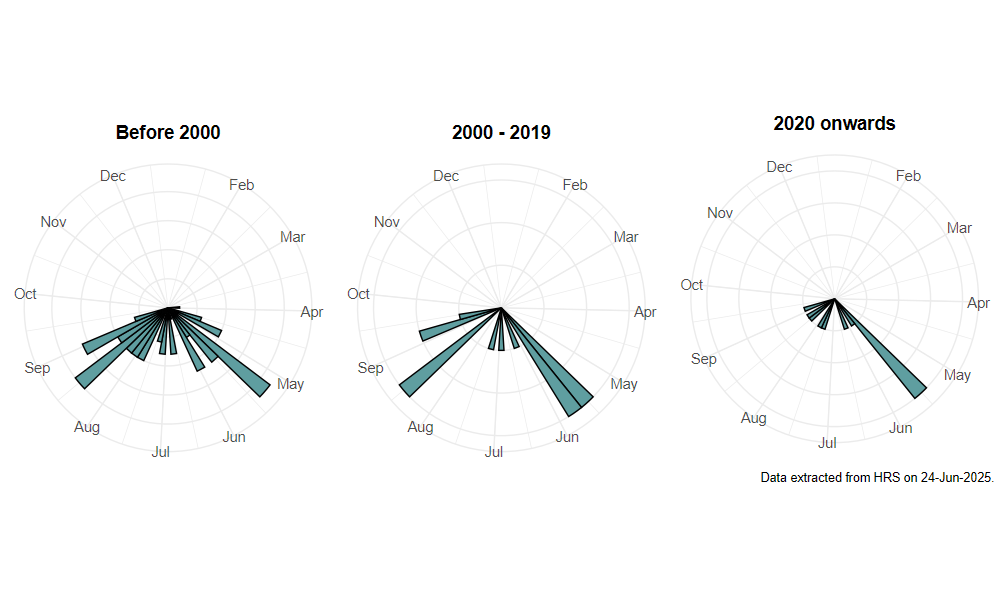Eristalis cryptarum (Fabricius, 1794)
Identification
Identification difficulty = 2. ![]()
![]() according to Ball & Morris, 20241
according to Ball & Morris, 20241
Synonymy
Eoseristalis cryptarum (Fabricius, 1794) in Levy & Levy (1994)2.
Biology
The larvae of this genus are of the 'long-tailed', aquatic type. Females have been observed ovipositing into crevices in a fresh cowpat and into saturated peaty mud in a well-trampled seepage. Typical habitat includes a mixture of open water and emergent vegetation comprising Bog-bean Menyanthes trifoliata, sedges Carex and rushes Juncus, as well as mosaics of seepages with scattered sallow Salix sp. scrub. Populations at individual sites seem to be small.
Flight period
The following plots show the number of unique records per week excluding those reported to be of immature stages.

Status
CRITICALLY ENDANGERED - Ball & Morris, 20143. Vulnerable (RDB2) - Falk, 19914 and Shirt, 19875.
Distribution
Historically known from the heathland bogs of the New Forest as well as from a scatter of sites in Dorset (especially Studland Heath), Devon, South Somerset and Cornwall. There are numerous records for the period between 1900 and the 1930s, after which an obvious decline occurred. The last record from the New Forest was in 1951. There were two records from south Dartmoor in the 1960s and one in 1978, after which there were no records until August 1993 (Levy & Levy, 1994)2. Despite considerable survey effort, it has been found in only 4 contiguous hectads within a restricted area of Dartmoor in recent times. Drake & Baldock (2004)[HX39SAU2] provide a summary of the situation as then known.^

-
Ball, S., & Morris, R. (2024). Hoverflies of Britain and Ireland. WILDGuides (3rd ed.). Oxford: Princeton University Press. ↩
-
Levy, E., & Levy, D. (1994). Eoseristalis cryptarum (Diptera, Syrphidae) - on Dartmoor. Dipterists Digest (first series), 1, 86. ↩ ↩
-
Ball, S., & Morris, R. (2014). A review of the scarce and threatened flies of Great Britain. Part 6: Syrphidae. ( No. 9). Species status (pp. 1–130). Peterborough: JNCC. ↩
-
Falk, S. (1991). A review of the scarce and threatened flies of Great Britain. ( No. 39). Research and Survey in Nature Conservation (pp. 1–194). Peterborough: NCC. ↩
-
Shirt, D. (Ed.). (1987). Red Data Books: 2. Insects. Peterborough: NCC. ↩